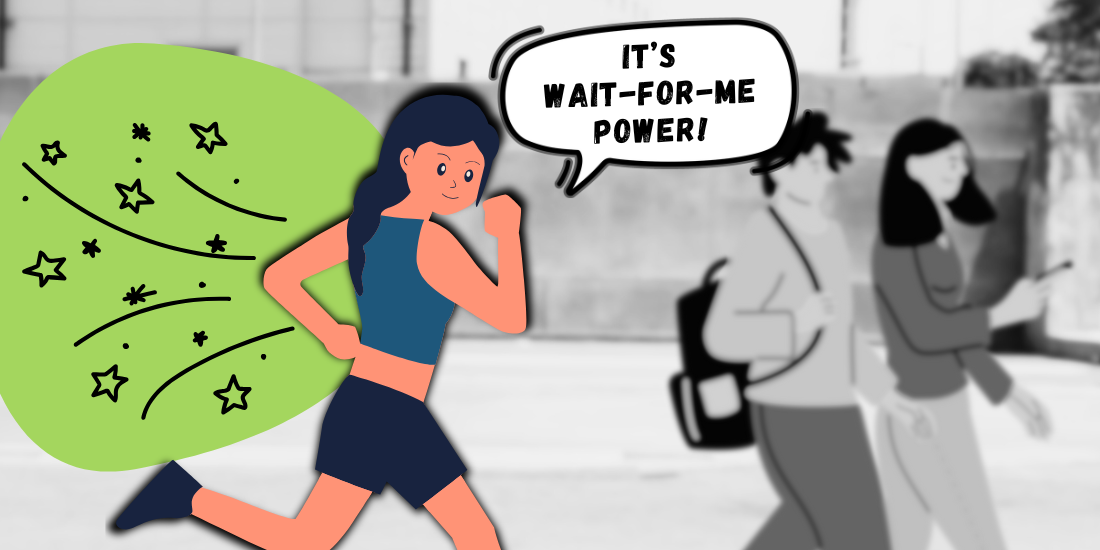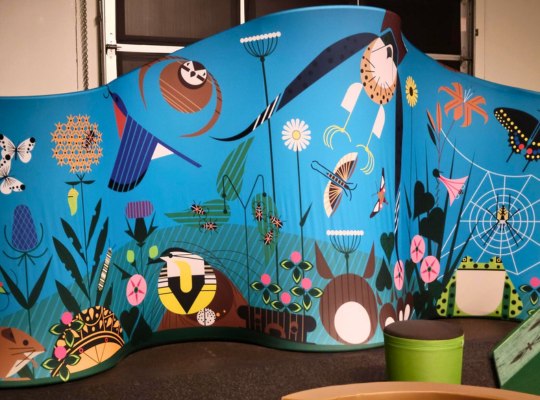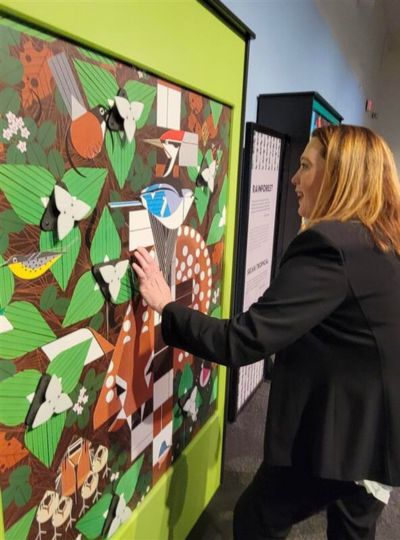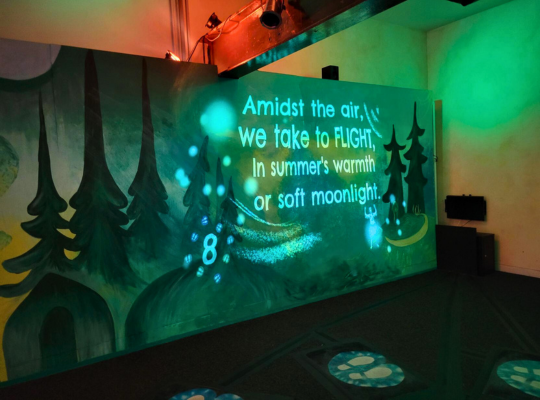
Wait-for-Me Power Isn’t What I Needed
“It’s Wait-for-Me Power!”
The first time I shouted those words, I was sprinting past my family on a sidewalk. We were on vacation, walking to our next activity, and I’d fallen far behind. That happened a lot when I was younger.
I always tried to keep up, but after a while, my feet would start to ache. Eventually, the pain became so intense that I had to stop and rest. (Foot pain was a constant throughout my childhood and eventually required surgery.) I remember watching my parents and older brother walking ahead of me, feeling helpless that I couldn’t keep up.
I worried I was slowing everyone down or even ruining the trip.
Superpowers are the only solution.
If my feet required breaks that left me behind, I needed a turbo mode. I wanted to experience the autonomy and responsibility of leading the way.
“Wait-for-me power” was my answer. When I shouted the words, I believed I could tap into a secret reserve of energy and surge ahead. I imagined how it would feel not to be the perpetual straggler, following the group at a distance.
Over time, I realized “wait-for-me power” was a substitute for what I really craved. A burst of speed wouldn’t solve it, because needing breaks wasn’t the problem. The problem was always being the afterthought… alone as I followed at a distance… excluded. What I really meant was “please-include-me power.” I wanted to feel like I belonged with the group.
My mom’s solution was bringing a manual wheelchair for outings that involved a lot of walking. It helped with speed, but not the real issue. I remember feeling anxious about whether I could go everywhere the other kids went in that chair, worrying I would still be left out. Would I still get to enjoy the same attractions? The same fun?
Even as a kid, I understood barriers too well. Some exhibits I couldn’t interact with. Some activities I had to sit out because my feet hurt too much—or the lights and sounds overwhelmed me. On more than one vacation, I watched from the sidelines while my family and other kids moved on without me.
Solving the real problem doesn’t take magic.
My childhood experiences led me to a career focused on inclusion, now as SDI’s Universal Design Program Coordinator. That’s how I wound up at the 2025 International Seating Symposium in Pittsburgh with our CEO, Lori Becker. Wanting to make the most of our trip, I researched places we might want to visit around town. That’s how I found the Pittsburgh Children’s Museum, a hands-on museum with inclusion, accessibility, and universal design incorporated from the beginning.
As a child, I’d never heard of universal design—the idea of creating spaces that consider all kinds of people: different heights, genders, ages, physical abilities, and more. I wondered how it would feel, now as an adult, to walk through a place that truly included kids like me. Would I see a version of my younger self there?
The Pittsburgh Children’s Museum absolutely delivered.

Designing for inclusion.
Danielle Linzer, the museum’s Senior Director of Education, Learning, and Research, greeted us warmly at the door and chatted with us before giving us the chance to explore.
We could look, touch, and experience everything.
Everywhere I turned, it felt like the space had been made with all kinds of children in mind. There were places to sit, run, jump, or roll a wheelchair. One room had water in all forms—even ice cubes. In the “i am wild: a charley harper exhibit,” we got to interact with textured, touchable artwork. It was hands-on, engaging, and playful. (That’s Lori in the photo!)
Lori and I both noticed something right away—nothing about the museum felt cold or clinical. Universal design often gets unfairly associated with hospital-like environments, but this space proved how warm, beautiful, and creative accessibility can be.
The museum nailed it with smart, thoughtful design.

Flexibility is key.
Sure, no design is perfect. But I admired how open the museum was to feedback and their commitment to continuous improvement. Danielle clearly knew her stuff, and her team had done their homework. I know people sometimes question whether universal design can really serve everyone, especially when different needs seem to conflict. That’s where flexibility becomes essential. This museum understands that.
For example, they host Sensory Friendly Afternoons, where they adjust lights and sound, and offer sensory kits. If one visitor needs quiet and another wants space to be loud and active, the museum adjusts its environment on different days or at different times so both can feel welcome.

No superpowers needed.
Not once during our visit did I worry about falling behind.
I could explore at my own pace and take breaks without stress. For the first time in a long time, I didn’t think about using my “wait-for-me power.” I didn’t need it. The Pittsburgh Children’s Museum included me by design.
Before we left, I watched a group of children laughing and racing around the building, catching little glimpses of my younger self in their joy.
Lori patiently waited for me at the exit as I lingered. I didn’t want a special power to speed ahead. Actually, I didn’t want to leave at all. That’s what real inclusion feels like.
That’s the kind of belonging good design can create.


